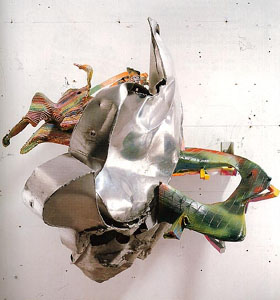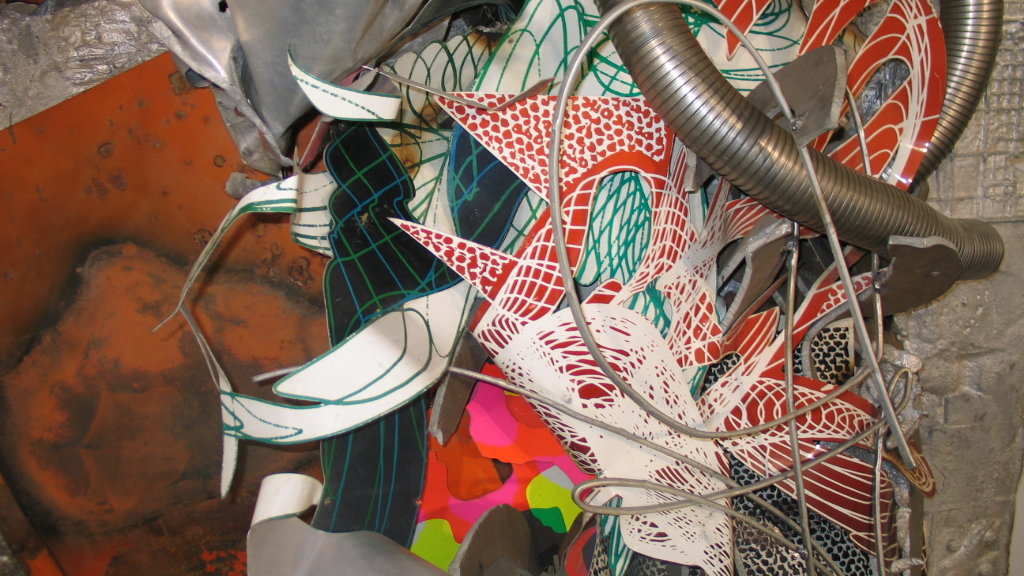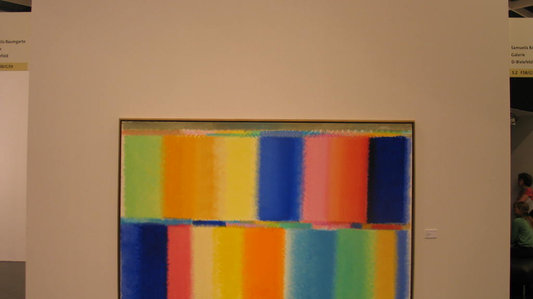Frank Stella
Biografie
Frank Stella zählt zu den einflussreichsten Künstlern des 20. / 21. Jahrhunderts. 1936 geboren, wuchs er mit der Abstraktion auf. 1950 trat er in die Phillips Academy ein, in Andover, Ma, wo er Kunstgeschichte und Malerei studierte. Und wo er sich bewusst wurde, dass er dem Figurativen nichts abgewinnen konnte. In einer Zeit, die von spätem gestischen und abstrakten Expressionismus bestimmt wurde, entwickelte er eine konstruktivistische Art der Malerei mit einem strengen, manchmal asketischen Willen zur geometrischen Form. In Bildern der so genannten Minimal Art richteten sich die Linien, Streifen und Farben noch an die Emotionen des Betrachters, wenn auch gedämpft. Stellas Werke jedoch zielen, durch ihre nachvollziehbaren konstruktivistischen Bildmuster, auf den Intellekt des Betrachters.
Frank Stella verabschiedete sich auch vom üblichen Rechteckformat und schockierte die Kunstwelt mit L-förmigen Bildern, regelmäßigen oder unregelmäßigen Mehrecken, manchmal mit einem Loch in der Mitte. Diese „shaped canvases“ (geformte Leinwände) sprachen von der Identität des Bildes und dem Bildträger, es gab keine Horizontalen auf vertikalen Formaten. In dieser Periode verzichtete Stella auf jede Andeutung von Bildraum oder Tiefe und betonte die Flächigkeit und Objekthaftigkeit der Leinwand selbst. Später hat er darauf hingewiesen, dass es ihm weniger darum ging die üppige Pinselarbeit des Abstrakten Expressionismus abzulehnen, wie es vielfach behauptet worden war, als vielmehr darum, auf der Entwicklung einer einheitlichen Oberfläche zu insistieren, indem er den Illusionismus negierte, den sichtbare Pinselstriche und vor- und zurückspringende Farben enthielten. (1)
Es gibt einen malerischen, allerdings keinen verführerischen, Illusionismus in Stellas Arbeiten aus dieser Zeit. Obwohl es möglich gewesen wäre, die linearen Elemente überaus präzise zu gestalten, sind sie es nicht. Im Gegenteil. Ihre Kanten sind verwischt und ausgefranst, und einzelne Pinselstriche reichen, wenn auch nur ein wenig, in den weißen Bereich hinein, der die Elemente trennt. Das ist ein Gegengewicht zur sauberen konstruktivistischen Abstraktion, da Malerei hier wieder verlebendigt und das Ganze Werk als malerisch definiert wird.
In den Achtzigern schuf Stella, nachdem er ausdauernd die Grenzen der Darstellung untersucht hatte, erst Gemälde, dann auch Reliefs aus verschiedenen Materialien, die auf schrifthafte Weise farbenfroh leuchtend gemalt und gefasst waren, und so gar nichts Präzises aufwiesen. Von da an war es nur noch ein kleiner Schritt zu den großen, freistehenden Skulpturen und den Wandreliefs, die mit vollem Recht im Kontext zeitgenössischer Architektur akzentuierende Positionen einnehmen. Spätere Werke des Künstlers stehen mit den skulpturalen Objekten auf einer Linie. Sie zeigen, in fantasievollen Reliefs auf modellierter Kunststoffbasis, eine Vielzahl einzelner Elemente, manchmal auch aus Papier, manchmal beweglich, die mit Heftklammern fixiert werden.
Stella hat ein halbes Dutzend Mal neue Wege künstlerischer Darstellungen erfunden und gehört so zu den kreativsten Künstlern aller Zeiten.
(1) Siehe moma.org, Essay von Constance W. Glenn aus Grove Art Online, © 2009 Oxford University Press
Man sieht, was man sieht.
Ausstellungen
Messen
Museumsausstellungen (Auswahl)
Frank Stella, NSU Art Museum Fort Lauderdale, bis 08.07.2018, Fort Lauderdale, USA
Frank Stella. The Kenneth Tyler Collection, bis Juli 2017, The National Gallery of Australia,
Canberra (Aus)
POP, MINIMAL AND FIGURATIVE ART: THE FISHER COLLECTION, 14.05.2016 -, San Francisco Museum of Modern Art (USA)
Frank Stella: A Retrospective, 17.04.2016 - 18.09.2016, Modern Art Museum of Fort Worth (USA)
Frank Stella Prints: A Retrospective, 06.02.2016 - 22.05.2016, Madison Museum of Contemporary Art, Madison (USA)
Phares, 14.02.2014 - 15.02.2016, Centre Pompidou-Metz, Metz
Frank Stella: A Retrospective, 30.10.2015 - 07.02.2016, Whitney Museum of American Art, New York
Frank Stella, Malerei & Zeichnung, 09.05.2015 - 30.08.2015, Museum für Gegenwartskunst - Emanuel Hoffmann Stiftung, Basel
Love Story. Die Sammlung Anne und Wolfgang Titze, bis 05.10.2014, Winterpalais, Wien
American Idols, bis 13.10.2013, Kunsthalle Weishaupt, Ulm
Skulpturen und Reliefs aus der Sammlung, 14.07.2012 - 10.02.2013, Kunsthalle Weishaupt, Ulm
Frank Stella. Die Retrospektive, Werke 1958 - 2012, 08.09.2012 - 20.01.2013, Kunstmuseum Wolfsburg
Frank Stella, 15.10.2011 - 04.12.2011, Altes Straßenbahndepot, Jena







